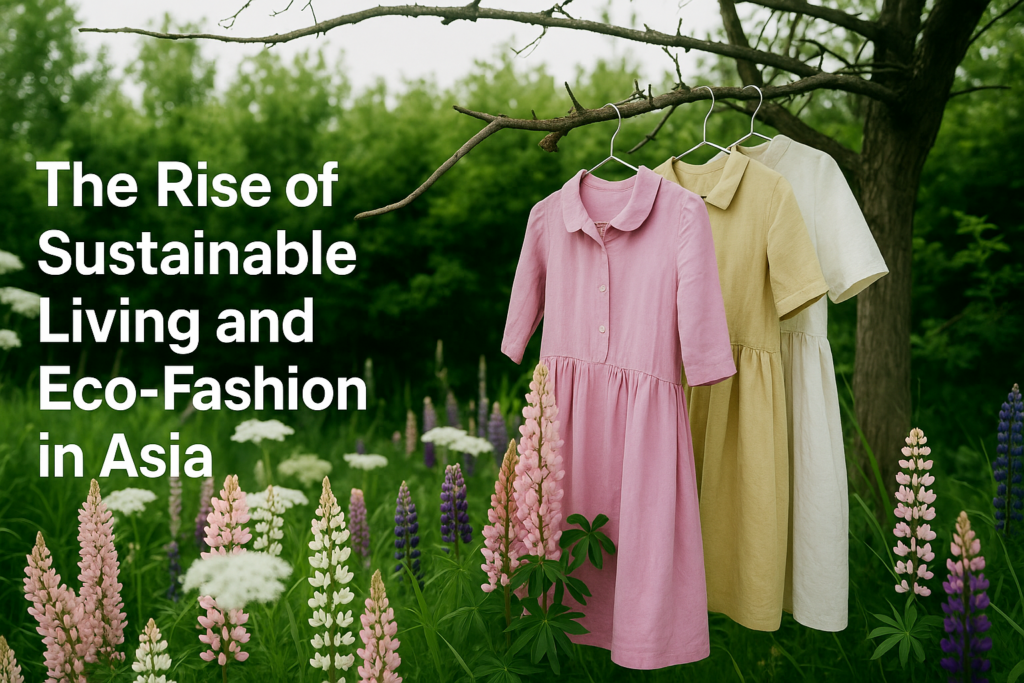In recent years, Asia has witnessed a significant shift toward sustainable living and eco-fashion, driven by growing environmental awareness and changing consumer habits. As one of the world’s largest manufacturing hubs and the most populous continent, Asia plays a crucial role in shaping the global fashion industry and lifestyle trends. This transformation reflects a broader movement where traditional values meet modern innovation to create a more responsible and environmentally conscious way of living.
Sustainable living in Asia is not just a trend but a necessary response to the increasing environmental challenges the region faces. Rapid urbanization, pollution, and the depletion of natural resources have made sustainability an urgent priority for governments, businesses, and individuals alike. From large cities like Tokyo, Seoul, and Shanghai to smaller towns, people are adopting eco-friendly practices to reduce their carbon footprint and promote a healthier lifestyle.
Eco-fashion, also known as sustainable fashion, has become an important part of this movement. It emphasizes producing clothes and accessories in ways that minimize harm to the environment, often using organic or recycled materials and ethical labor practices. This approach challenges the fast-fashion industry, which has been criticized for its wastefulness and exploitation of workers. In Asia, the rise of eco-fashion is reshaping the industry by encouraging designers and brands to innovate and embrace sustainability as a core value.
One notable example is the increased use of natural fibers such as organic cotton, bamboo, and hemp, which require fewer chemicals and less water than conventional materials. Many Asian designers are exploring these options, combining them with traditional techniques like hand-weaving and natural dyeing. This blend of heritage craftsmanship and sustainability resonates with consumers who seek authenticity and environmental responsibility.
Moreover, cities across Asia have seen a surge in sustainable fashion events, pop-up markets, and eco-conscious retail spaces. These platforms promote brands that prioritize ethical production and transparency, allowing customers to make informed choices. The younger generation, in particular, is driving this demand. Millennials and Gen Z consumers are more aware of the impact of their purchases and actively support brands that align with their values.
Social media has also played a vital role in spreading awareness and inspiring lifestyle changes. Influencers and activists in Asia use digital platforms to educate followers on sustainable living tips, highlight eco-friendly brands, and advocate for better industry practices. This grassroots movement helps create a community of environmentally conscious individuals committed to making a difference.
In addition to fashion, sustainable living in Asia encompasses various lifestyle aspects such as reducing plastic use, embracing renewable energy, and supporting local food systems. These changes reflect a holistic approach to sustainability, where every action contributes to protecting the planet for future generations.
However, challenges remain. The transition to sustainable fashion and living requires overcoming economic and cultural barriers. Many small businesses struggle to adopt eco-friendly methods due to higher costs, and consumer habits can be slow to change. Nonetheless, government policies in some Asian countries are beginning to support sustainable initiatives through subsidies, education, and regulations, which helps accelerate progress.
In conclusion, the rise of sustainable living and eco-fashion in Asia represents a hopeful and dynamic shift toward a greener future. By merging traditional practices with modern innovation, the region is carving a unique path in the global movement for environmental responsibility. As awareness grows and more people embrace sustainability, Asia’s lifestyle and fashion industries will likely continue evolving in ways that honor both culture and the planet.

